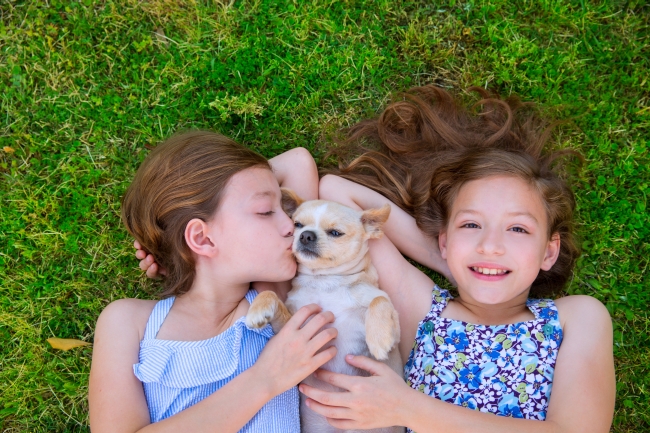
Dogs improve our overall lifestyle and people who own cats are statistically less likely to die from a heart attack than those without them. There are physical, emotional, social, educational and cognitive aspects of child development that are benefited by owning a cat or dog. When children engage with animals, they gain crucial skills such as learning to share, and cooperating with the needs and preferences of others. There are advantages in playing, being active, laughing and cuddling with a dog or cat, and children are able to empathize and connect with peers who also share a love for animals.
Elements of Child Development Improved by Pets
Cognitive/Psychological: Observing and cohabiting with pets seems to incline children to be less self-centered and self-focused than those who are without pets. A child’s awareness of the environment around them will improve, simply by watching their animal interacting with the world, different scents, objects, and noises etc. The steady presence that an animal brings also helps fortify and comfort children.
Physical: Chasing, petting, wrestling and running around with pets is a fantastic way to engage a child’s motor skills and physical coordination. Kids can learn to play catch with their dog or cat, as well as learning what boundaries are important with animals. (Parental supervision is recommended when the children are small, since accidents can happen if a child oversteps his or her bounds with a dog or cat.) Aside from the physical developmental, being around animals also exposes children to germs they would not otherwise have access to, thereby improving the child’s immune system. Children are less likely to get sick or suffer from allergies and skin eczema later in life if they grow up with pets.
Emotional: Children who are given responsibilities often rise to the occasion. Though it is the parent’s job to teach the child their responsibilities, the pet provides a good vehicle for practicing these skills. The more a child works with their pet, the more her confidence will increase. The affection, loyalty and care that pets give children also help boost their self-esteem. Cats particularly have also proven to help children who struggle with depression, loneliness or self-doubt.
Social: Most children suffer from shyness particularly if they are in a new environment with other children. If there is a pet present, the child may be more inclined to approach someone who he would otherwise be too shy to talk to. Not only do pets help bridge anxiety and awkwardness that can occur in social settings, but they can help a person feel at ease, while giving them a connection point and a bonding, common interest with someone else.
Educational: When kids are exposed to pets, they have been found to be much more motivated scholastically. Their emotional connection to their pet heightens their enthusiasm to learn more about animals, and to finish their work efficiently so as to have time to play with their dog or cat. Learning about a particular breed that interests them will help expand their knowledge, and even bringing a child along when you shop for the right kind of pet food, or to veterinarian exams will educate him about the pet’s needs.
Resources

